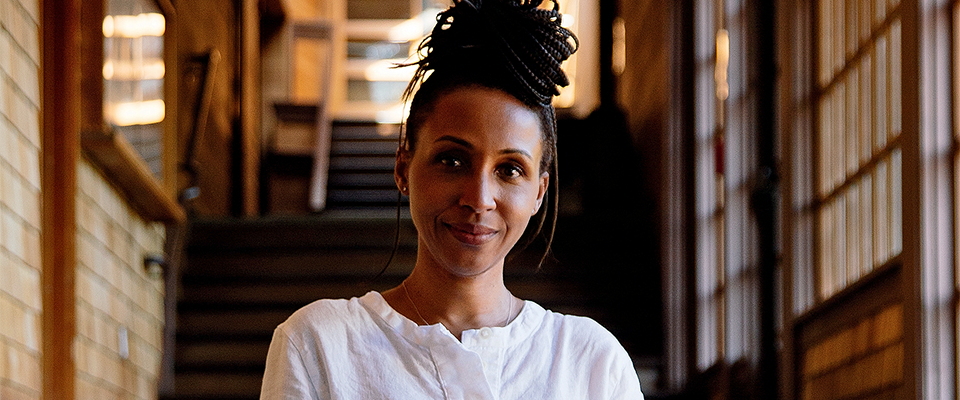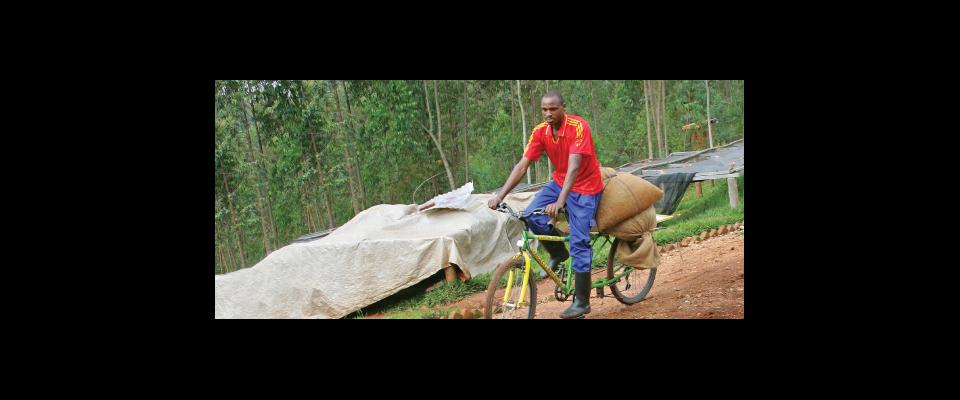In the Caribbean nation of Trinidad and Tobago, the juices swap around.
A few nations are composed all of town, and a few all of country, but most contain elements of both. In Trinidad and Tobago, the two-island republic in the southernmost Caribbean, the division is neat: for city you go to Trinidad, for country to Tobago. My own preference is country, but since most flights land in Trinidad, I stopped there first.
Trinidad is the larger island, at 1,846 square miles to Tobago’s 116. Once a part of the South American continent, Trinidad is now separated from it by seven miles of salt water. Two narrow straits, one intruding from the Atlantic, the other from the Caribbean, meet to separate the island from Venezuela, the delta of the Orinoco River, and the administration of Hugo Chavez. Proximity to South America and its rainforest have made Trinidad the most biologically diverse Caribbean island. Even now, when the Orinoco floods it sends new plants and animals rafting across.
Disparate human groups have washed ashore, too. Trinidad was emancipated in 1834, after which came a wave of indentured East Indians to replace African slaves in the sugarcane fields. This was followed by emancipated West Indians from higher up the chain of the Lesser Antilles, free Blacks from the United States, indentured Chinese, French and German laborers, Syrians, and Lebanese. All these arrivals have mixed and melded in an orgy of cross-pollination. Trinidad’s Carnival, with its French origins and its West African rhythms, is joined by other cultural festivities: Holi, the Hindu “Festival of Colors” with its celebration of good harvests; the Parang Festival of Venezuelan caroling; and Eid-ul-Fitr, celebrating the Muslim New Year. Each group seems to take pride in the fêtes of the others.
This is a social engineering recipe out of Huck Finn. Of the victuals of the Widow Douglas, you may remember, Huck observes that “… there warn’t really anything the matter with them—that is, nothing only everything was cooked by itself. In a barrel of odds and ends it is different; things get mixed up, and the juice kind of swaps around, and the things go better.” In Trinidad, nothing cooks by itself.
This acculturation is best exemplified, indeed, by the food. The roadside vendor who sells you your breakfast “doubles” (two East Indian flat breads wrapped around chickpeas topped with chutney) is as likely to be of African descent as of Indian, and she will have added her own touches. All Trinidad cuisine blurs this way, and their street food is wonderful.
I ate well in the island’s hotels and restaurants, but my favorite dinner was a nomadic one among the carts and stalls of Queen’s Park Savannah in Port of Spain. I began with a bowl of cow-heel soup, then moved on to roti, which is East Indian flat bread folded around curried meat or vegetables. I liked this finger food so much that I ordered a second roti, this time the large version called bus’up shaat, because in the eating it gets torn to shreds, like a busted-up shirt. There is no way to eat bus’up shaat with “broughtupcy,” as Trinidadians call good manners. By leaning forward, you can keep it off your own shirt, but some inevitably winds up on the ground.
My dinner ended in another part of town, with a Carib beer in one hand and more roti—curried goat, this time—in the other, as I watched a steel band rehearse. Some 20 or so pannists were playing Beethoven at about 100 decibels. I was struck not only by the grace and athleticism of the musicians but also by the mix of ages and genders (teenagers, 30-somethings, a 7-year-old boy performing beside a matron in her 60s). This was community music of a kind nearly extinct in the United States.
The steel band began its evolution on Trinidad during slavery, when the British and French banned drums, fearing that the Africans were sending messages with them. The drummers shifted to bamboos of varying lengths, then to the stolen lids of garbage cans, and then, when locking lids were introduced against the thievery, to the whole garbage can, and finally to 55-gallon fuel drums. At the rehearsal, watching the rapt faces of the performers, I was moved. I loved the sound, but as the band launched into Wagner at the volume of a 737 on take-off, it occurred to me that the call of a tropical bird in the stillness of the forest would be a very fine thing, too.
Driving up through the green foothills of Tobago toward the Main Ridge Rainforest Reserve in a “maxitaxi” (a glass-half-full term for minibus), we were halted by the flashing lights of a police car. Tobago’s finest were clearing the way for a procession of the Tobago Heritage Festival. Dressed in polychromatic traditional costumes and turbans marched 50 or 60 villagers.
The Heritage Festival is a two-week celebration that travels from village to village in the second half of July, with each of Tobago’s communities playing out some theme from the island’s past. Les Coteaux Village reenacts island folktales. Delaford Village features yabba, the one-pot dish invented there. Buccoo Village features goat races. Pembroke puts on its Salaka Feast, which honors the Yoruba, Ibo, and Mandingo ancestors. It occurred to me, as we waited for the procession to pass, that the celebrants had no audience. There was no flash of cameras, no light-skinned witnesses from somewhere else. I remembered a phrase of my father’s, “Artificial Magic Island,” by which he meant the syndrome of the hotel hula, the fake luau, the thatch-roofed poolside bar, the propane-fueled “native” torch. There was no AMI in today’s procession. The marchers were doing it for themselves.
When they had passed, the maxitaxi slipped into gear and again wended its way up toward the Main Ridge Rainforest Reserve. According to Tobagonians, its original 10,000 acres, set aside by the British in 1776, are the oldest protected rainforest in the Western Hemisphere. Our guide, Newton George, awaited us at the trailhead, dressed for work in a green uniform polo shirt, green shorts, and hiking boots. George is a dark-brown Tobagonian who suffers from a hopeless case of what the rainforest entomologist E.O. Wilson calls biophilia. As a boy, he learned the forest birds from his father, who was custodian at Argyle Falls (lower on the mountainside), and since then he has fallen in love with the entire ecosystem of his native rainforest. Mr. George asked us to call him Newton but he had other names as well: “Garvey,” for Marcus Mosiah Garvey, “Nayabinghi” for the tribe in Africa, “Teacher” for his natural-history lessons, and “Morse,” a name bestowed by his brother for reasons mysterious to Newton himself.
“Every young guy in Tobago has an alias,” he told us. “A lot of guys here, I don’t know their real name. They call one guy ‘Wire.’ Very t’in. Another guy they call ‘Top Rankin’,’ because everything he have, it have to be the best.” Newton added that the local term for a citizen of Trinidad and Tobago is “Trinbago.” In the Caribbean at large, he said, Trinbagos are called “Southies.”
The trail began in the shadow of a strangler fig, which Newton nicked to show us the white latex. Farther on, he caught a leaf and bent it toward us. “Candlebush,” he said. “The leaves make tea for babies. Fixes clogged blood.” Newton waved up at the canopy. “Cajuca. Wild nutmeg,” he said. It was a tree I knew from French Guiana, where the Wayãpi call it walusi and grate the young aerial roots to make cough medicine. The Palikur call it wahusi, and use a decoction of the bark as an oral disinfectant. There are dozens of other medicinal uses, and the dark-red resin is hallucinogenic, besides. “We make coffins of it,” Newton said. “It’s good wood for that, because the coffin decays fast.”
Biodegradable coffins of hallucinogenic nutmeg! Not a bad way to go. Much better, I thought, than the stainless-steel battleships in which we send our own dead across the water. A Trinbago returns quickly to dust, as nature intended and Genesis 3:19 prescribes.
Newton nodded toward a perfectly circular entrance to a burrow in the cut bank of the trail. “Blue-crowned motmot,” he said. “It nests in there.” When I asked how he knew a motmot was responsible, he answered that the size of the hole was key: the blue-crowned motmot is a big bird and it requires a big burrow. The red earth of the cut bank provided lodging for all sorts of creatures. Newton’s flashlight, shining into a high recess of the bank, illuminated several inverted bats waiting for nightfall. Farther on, he asked us if we could see the door of a trapdoor spider. None of us could. Newton reached out to trace with his fingertip the imperceptible crack of the door in the steep embankment. One client stared at him. “How did you see that?” she asked. Probing with his finger, Newton found the spider’s tripwire and jiggled it. When the spider flipped open its door to pounce, he seized the lid, showed us how the door articulated on its hinge, then allowed the spider pull it shut again.
We jumped small streams and ponds in which small fish fled from us. “Grumpies,” said Newton. A land crab scuttled backwards off the trail. “Opossum crab,” said Newton. “They carry their eggs and young in a pouch.” Rufous-tailed jacamars and rufous-breasted wrens called from the forest. White-tailed saberwing hummingbirds hovered to examine us. Two male blue-backed manikins began their competitive dance at the downslope of a lek, flying five or six feet vertically from the leaf litter, then dropping to the ground again. A collared trogon called out and Newton responded with an imitation, luring the bird closer. Perched on a branch, the trogon—green backed, red breasted, white collared—cocked its head to listen. “My favorite bird,” Newton confided. “Seven colors!”
After two hours in the forest, as we headed back toward the trailhead, I noticed an interesting thing: All of us now could spot the trapdoors of spiders without Newton’s help. The hint of each door’s circle jumped out at us. If humans are hardwired for anything, it is for learning new landscapes.
The Tobago House of Assembly and the T&T government are working to develop tourism on Tobago and the island now hosts the Tobago Jazz Experience, the Tobago International Cycling Classic, the Tobago International Game Fishing Tournament, the Blue Food Festival, and other such events. Somewhere down this road lies Artificial Magic Island, but Tobago still has a long way to go.
One day, several companions and I boated out to Buccoo Reef, at the northwestern end of the island. We snorkeled above the “potato corals” and “dead man’s fingers,” as the Trinbagos call the gorgonian corals. I made little 15-foot dives to the reef to peek in holes and under ledges. There were damselfish and parrotfish and a cornetfish whose beak—its cornet—was bright blue. When I finally clambered back up the dive ladder, I saw that four glass-bottom boats were clustered about us. If not AMI, exactly, then this was certainly CMI, Crowded Magic Island.
From the reef, we motored in to a shallow white-sand spit called Dance Bar. Six glass-bottom boats had gathered there and disgorged 40 or 50 passengers. Some were dancing. Some were exfoliating their skin with sand. Some were just sitting chest-deep in the turquoise water. Ablutions on Dance Bar, I learned, are supposed to make a pilgrim feel ten years younger, and married couples come to wash away their domestic troubles. A saltwater Lourdes for the lovelorn may smell like something cooked up by the tourist bureau, but nearly all the waders were Trinbagos, and the music blaring from the boats was not calypso or soca or reggae, as a tourist would expect. It was Syrian music. This was the real T&T, where the soundtrack is eclectic, where nothing cooks by itself, and the juices really swap around.





















